| Prefectures Posted | Hokkaido , Aomori , Iwate , Miyagi , Akita , Yamagata , Fukushima , Ibaraki , Tochigi , Gunma , Saitama , Chiba , Tokyo , Kanagawa , Niigata , Toyama , Ishikawa , Fukui , Yamanashi , Nagano , Gifu , Shizuoka , Aichi , Mie , Shiga , Kyoto , Osaka , Hyogo , Nara , Wakayama , Tottori , Shimane , Okayama , Hiroshima , Yamaguchi , Tokushima , Kagawa , Ehime , Kochi , Fukuoka , Saga , Nagasaki , Kumamoto , Oita , Miyazaki , Kagoshima , Okinawa |
Japan Travel Tips
Japan is an archipelago country located in East Asia, offering a fascinating blend of ancient traditions and cutting-edge modernity. It is a land of diverse landscapes and vibrant cities, with a rich history spanning centuries, dynamic urban centers, delicious food culture, breathtaking nature, efficient transportation, warm hospitality, and deep cultural traditions. 1. Ancient Capitals and Modern Cities: From the serene temples and shrines of ancient Kyoto and historic heritage in Nara, to the modern skyscrapers of Tokyo and Osaka, Japan offers timeless beauty that transcends eras. The coexistence of tradition and modernity in its cities allows visitors to experience the feeling of traveling through different time periods simultaneously. 2. Culinary Adventures: Japanese cuisine is internationally acclaimed for its delicate flavors and beautiful presentation. From sushi and sashimi to ramen, each region offers unique flavors to delight your taste buds. From local street stalls to high-end restaurants, you will be amazed by the diversity of food culture. 3. Stunning Nature: Japan's landscapes are filled with constant beauty. Cherry blossoms color the spring, while autumn is adorned with vibrant fall foliage. The majestic presence of Mount Fuji and the untouched forests of Yakushima provide a sense of tranquility and a connection to the mysteries of nature. 4. Convenient Transportation: Japan's transportation infrastructure is efficient and advanced. The Shinkansen, or bullet train, offers high-speed and comfortable travel, while convenient public transportation in urban areas makes sightseeing enjoyable. With easy access to anywhere, planning your trip becomes easier, and the stress of getting around is minimized. 5. Hospitality: The Japanese spirit of hospitality creates special experiences for travelers. The kindness and attention to detail from local people make visited places more than just tourist destinations but heartwarming locations. 6. Deep Cultural Traditions: Tea ceremonies, kimono, kabuki, and other traditional arts are all part of Japan's allure. By experiencing these cultural traditions, you can connect with Japan's uniqueness, delve into its deep history, and feel a connection to modern Japanese society. 7. Safe and Clean Environment: Japan is known as one of the safest and cleanest countries in the world. The friendly locals, orderliness in public spaces, and beautiful environment provide a sense of security and peace of mind for travelers. A trip to Japan is a continuous journey of surprises and awe-inspiring moments. In this country where the old and the new, tradition and the future resonate, unforgettable experiences await. Come and discover the charms of Japan and embark on a journey enveloped in its magic. [Text: @AI, Translation: @AI]
| See | Exp | Eat | Inn | Buy | Tra |
Sightseeing in「Japan」

Mount Fuji@Juliette Climbing Mount Fuji with my friends was the most special experience of my life. We hiked throughout the night and arrived at the peak during sunrise. The shadow of Mount Fuji on the land was the most breathtaking thing I have ever seen.

Yufudake@由布市商工観光課 Yufudake, 1,584 meters above sea level, is called "Bungo Fuji" because of its beautiful and majestic appearance with binaural peaks, and has been revered as an object of mountain worship since ancient times. A safety festival is held every year in early May, and the mountain is visited by many climbers from within and outside of the prefecture throughout the year. The summit commands views of Beppu Bay, the Kujyu mountain range, and the Yufuin Basin. (Source: Yufu City Commerce, Industry, and Tourism Division website)

Tsuwano Castle@しずくいし Tsuwano Castle was built by the Yoshimi clan in the Kamakura period to monitor the Mongol invasions. Later, during the Oei Invasion, the Yoshimi clan rebelled against Sue Harukata and held out for over 100 days. After the Battle of Sekigahara, the Yoshimi clan, being under the control of the Mori clan, went to Hagi, and the Sakazaki clan took over the castle and reconstructed it to its current form. The Sakazaki clan was later involved in the Chihime Incident and was subsequently deprived of their status. The Kamei clan took over and governed the domain until the end of the Edo period. Descendants of the Kamei clan include former parliamentarian Kamei Hisaoki and his daughter Akiko.
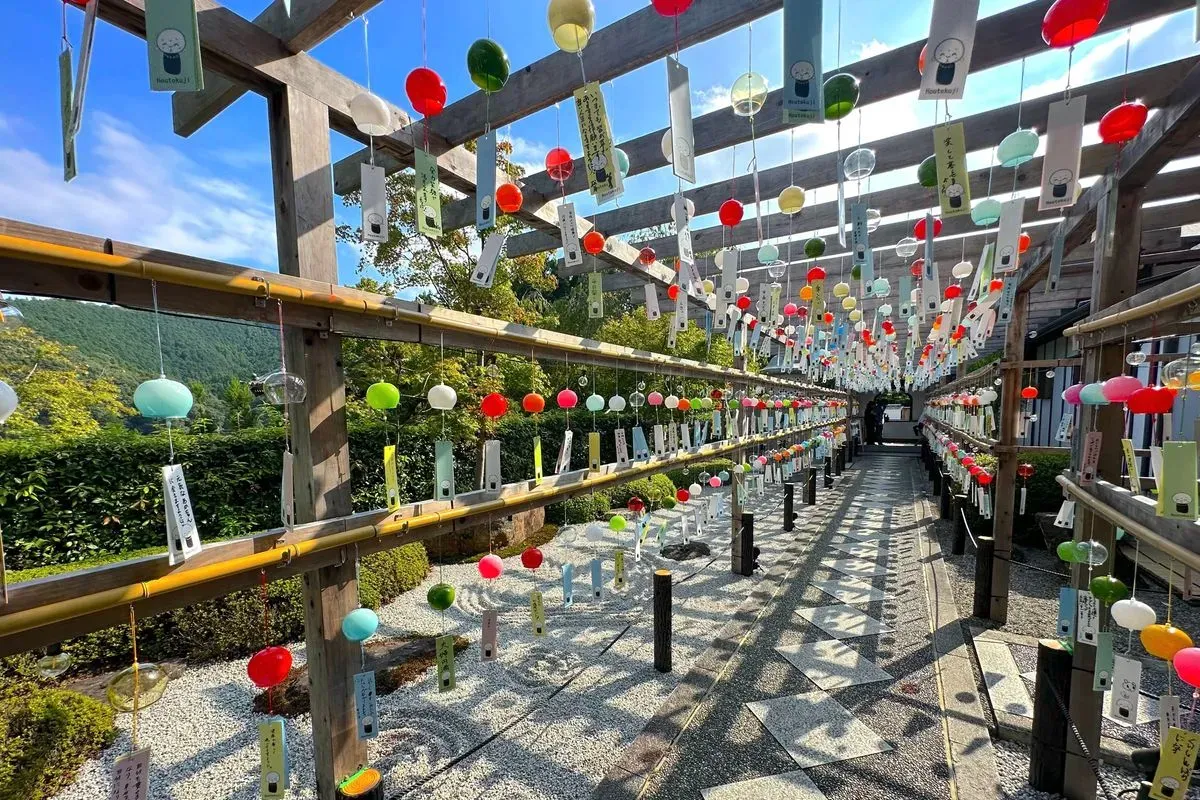
Houtoku Temple@masahiro I visited Houtokuji Temple in Kiryu City, Gunma Prefecture, which I had wanted to visit for a long time. While cherishing the old traditions, various new creative ideas have been implemented, which was very informative. I was able to leisurely stroll around in a calm atmosphere and relax while feeling the Zen.

Muroto Cape@yokovic 【Travelogue】January 10, 2024 I drove along the coastal road lined with countless tetrapods and fishing boats and arrived at Cape Muroto. The promenade is beautifully maintained, making it quite easy to walk. They even suggest different ways to explore, such as the deep-sea zone, subtropical plant zone, birth of the earth zone, and magma zone. How considerate. Let's just stroll around casually for now. Upon entering the subtropical plant zone, I encountered a monster! Its roots are swallowing the rocks. I've never seen a tree like this before. It's so much fun, like progressing through a dungeon. And when it comes to Cape Muroto, there's the chalk-white lighthouse. It seems to take 20 minutes one way on the steep pilgrim mountain path. I took off my knit cap after 5 minutes, removed my gloves after 10 minutes, and by the time I reached the top, my legs were trembling. It's quite challenging for 20 minutes. Finally, in front of the chalk-white lighthouse, I spent the best morning basking in the sunlight, with a rugged rock formation like rusks and the endless expanse of the Pacific Ocean in a panoramic view. Oh, the sun is truly great after all.

Ise Grand Shrine@yokovic 【Visit Report】July 10, 2024 Once in a lifetime, I visited the familiar Ise Jingu, a place with a 2,000-year history. I assumed there would be various customs for worship at such a venerable place, so I did some preliminary research. As a result, I found that there are the Naiku and Geku, and it is customary to visit the Geku before the Naiku. After savoring the Geku, I was astonished by the unusually wide approach when entering the Naiku. In addition, the giant hinoki cypress trees on both sides help reduce the direct sunlight from the sun. What a comfortable approach it is. The space, where unnecessary things are thoroughly eliminated, was an indescribably sacred place. ... After offering prayers, I got hungry. Shall I have Ise Udon before heading back!

Amida Falls@tzeppery Listed as one of Japan's top 100 waterfalls with a 60-meter drop, this waterfall is said to have been discovered by the revered Buddhist monk Taicho who opened Mt. Hakusan, following a revelation from a goddess. Proper equipment is necessary during the winter, but it offers a more fantastical view.

Nasu Chitai Jizo@madotabi As the name 'Senso Jizo' suggests, there were many Jizo statues. It was a bit overwhelming, but seeing something rare was interesting!
Experiences in「Japan」

Ginzan Onsen@山形県観光復活戦略課 The retro scenery of Ginzan Onsen is like stepping back in time. In the hot spring resort area where wooden inns line both banks of the Ginzan River, gas lamps are lit at dusk, creating a nostalgic Japanese atmosphere. It is just like the setting of the movie "Spirited Away. It is also known as the filming location for the national TV drama "Oshin. The most photogenic time to visit is on a snowy night. The snow-covered streets look great against the outside lights. Walking the streets during the daytime is also worth seeing. The walls of the inns are decorated with colorful paintings called kote-e, and the asphalt is covered with tiles resembling snow crystals. At the "Wara Footbath," visitors can soak in hot spring water directly from the source right next to the Ginzan River, creating an extraordinary feeling unique to a hot spring resort. There are many cafes, eating spots, and souvenir shops within walking distance, making it an enjoyable hot spring resort to stroll around. Why not walk through the picturesque streets wearing rental clothes from the Taisho period (1912-1926), when Western culture first entered Japan? The famous "curry bread" is now the face of Ginzan Onsen. It is a perfect snack. Although it is an unexplored region covered with deep snow, it is easily accessible from Tokyo by the Yamagata Shinkansen bullet train, which takes about 3 hours, plus a 40-minute direct bus ride. Enjoying the open-air hot spring baths in the snow is another pleasant feature of Ginzan Onsen, which is located in an area with heavy snowfall. In the evening, warm yourself in the hot spring baths at the ryokan, and enjoy gourmet specialties such as finely marbled Obanazawa beef and Obanazawa soba noodles made from locally produced buckwheat flour. Nearby, there are scenic natural spots such as the "Sanshinkyo Gorge" with its beautiful fresh greenery and autumn leaves, and the "Shiragin-no-taki Waterfall" with a direct fall of 22 meters. (Source: A Trip to Yamagata)

Nara Toka-e@kyoka Every year in early August, a fantastic light event is held throughout Nara Park. Countless candle lights blend with the historical buildings and nature of the ancient capital Nara, creating a romantic and mystical atmosphere. Various themed lights are placed throughout the vast grounds of Nara Park. In particular, the lights in the 'Fukuenchi' area in front of the Nara National Museum and the lights reflecting in the pond around the Fumizutando are popular spots for photography. During the event, there may be special access to places not usually open at night, such as Kofukuji Temple and Todaiji Temple. The sight of historical buildings illuminated by lights in the quiet of the night has a completely different charm from daytime. Within walking distance from Kintetsu Nara Station and accessible from JR Nara Station.

Green Farm (Kagoshima City Tourism and Agriculture Park)@鹿児島市観光課 Located on a hilltop about 230 meters above sea level overlooking Sakurajima and Kinko Bay, it is a hands-on tourist facility where anyone can easily enjoy nature and agriculture. The facility includes "Kiire no Mori," a direct sales center for agricultural products, "Daidai," a farm restaurant, a campground with air-conditioned bungalows and shower rooms, and a citizens' farm where visitors can stay and enjoy a variety of experiences, including farming, cooking, nature, and environmental education.
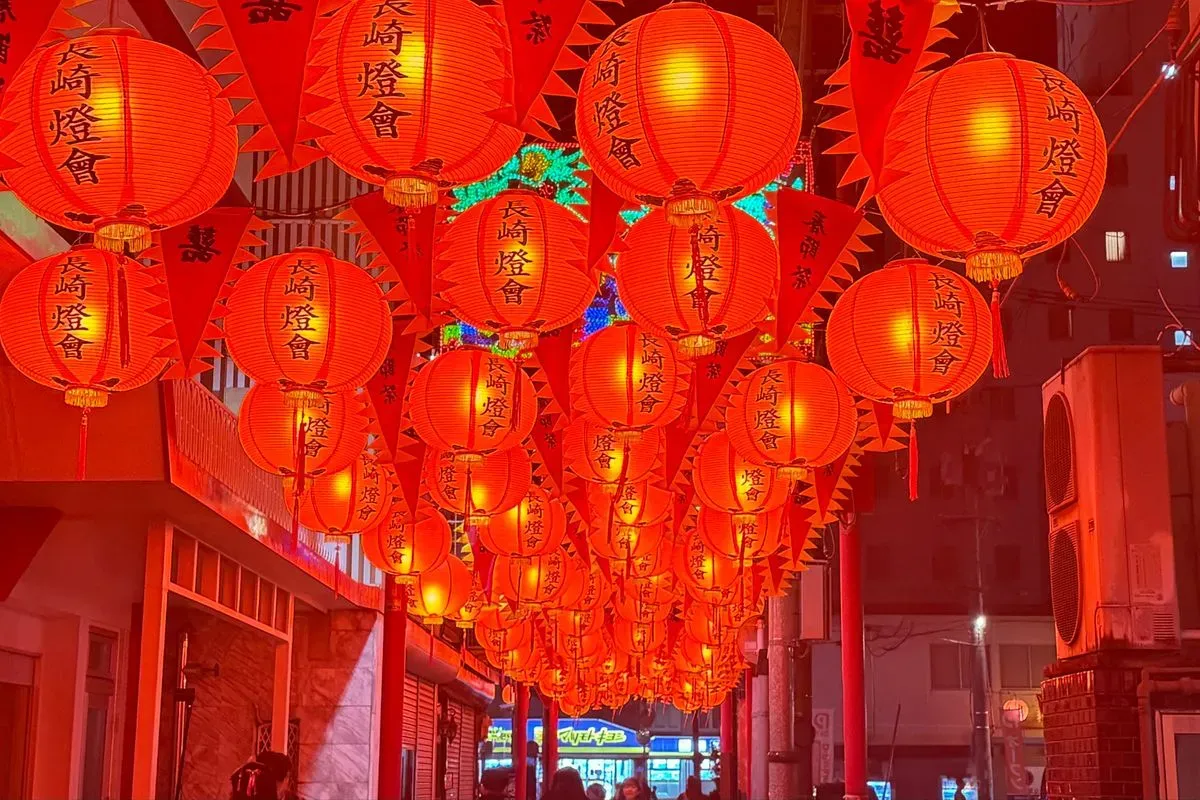
Nagasaki Chinatown@しずくいし The Nagasaki Lantern Festival is an event held in the center of Nagasaki city around the Chinese New Year each year. The city is adorned with Chinese lanterns, attracting tourists from both domestic and international locations. There are shows related to China such as dragon dances and face-changing performances. Additionally, there are moving scenes such as performances by local high school students. It is not only an event for food, but also a valuable opportunity to experience Chinese culture. Visitors can also take a trip from Nagasaki Port to Gunkanjima, and it is also recommended to participate in the event while sightseeing in places like Sasebo and Shimabara.

Suigo Chiyrai Ayame Matsuri@いばらき観光キャンペーン推進協議会 The 'Suigo Sawara Ayame Matsuri,' which began in 1952, has become a symbol of early summer in Ibaraki, where many tourists from within and outside the prefecture visit to enjoy the unique scenery of Japan. The Suigo Sawara Ayame Garden, the venue for the festival, is home to approximately 1 million irises of around 500 varieties, and typically reaches its peak bloom after early June. During the festival, unique events specific to the Suigo region are held, such as leisurely rowboat tours along the Maekawa River, which used to be an important mode of transportation in the area, and the operation of 'bridal boats' that replicate customs from the Showa era. Additionally, the garden is illuminated daily from 18:30 to 22:00 during the festival period, offering a different, fantastical atmosphere for viewing the irises. (Source: Ibaraki Tourism)

Kyushu National Museum@福岡県観光連盟 It is the fourth national museum in Japan, newly established after Tokyo National Museum, Nara National Museum, and Kyoto National Museum in 108 years. It opened on October 16, 2005, on the hillside behind Dazaifu Tenmangu Shrine. The huge building, with a large curved roof inspired by a mountain range and covered by a double-skin glass exterior, is eye-catching and the largest of the national museums in terms of scale. While other national museums are art museums, this so-called history museum exhibits the formation of Japanese culture from the Paleolithic Age to the late Tokugawa Period, based on the concept of "a museum that captures the formation of Japanese culture from an Asian historical perspective," since Kyushu has deep ties with Asia. In addition to Masanobu Kano's "Shumo Shu Airenzu" (National Treasure), many other important cultural properties are on display, and special exhibitions are held at certain times of the year. admission to the Asian cultural experience area "Ajipa" on the first floor is free. (Source: Crossroad Fukuoka)
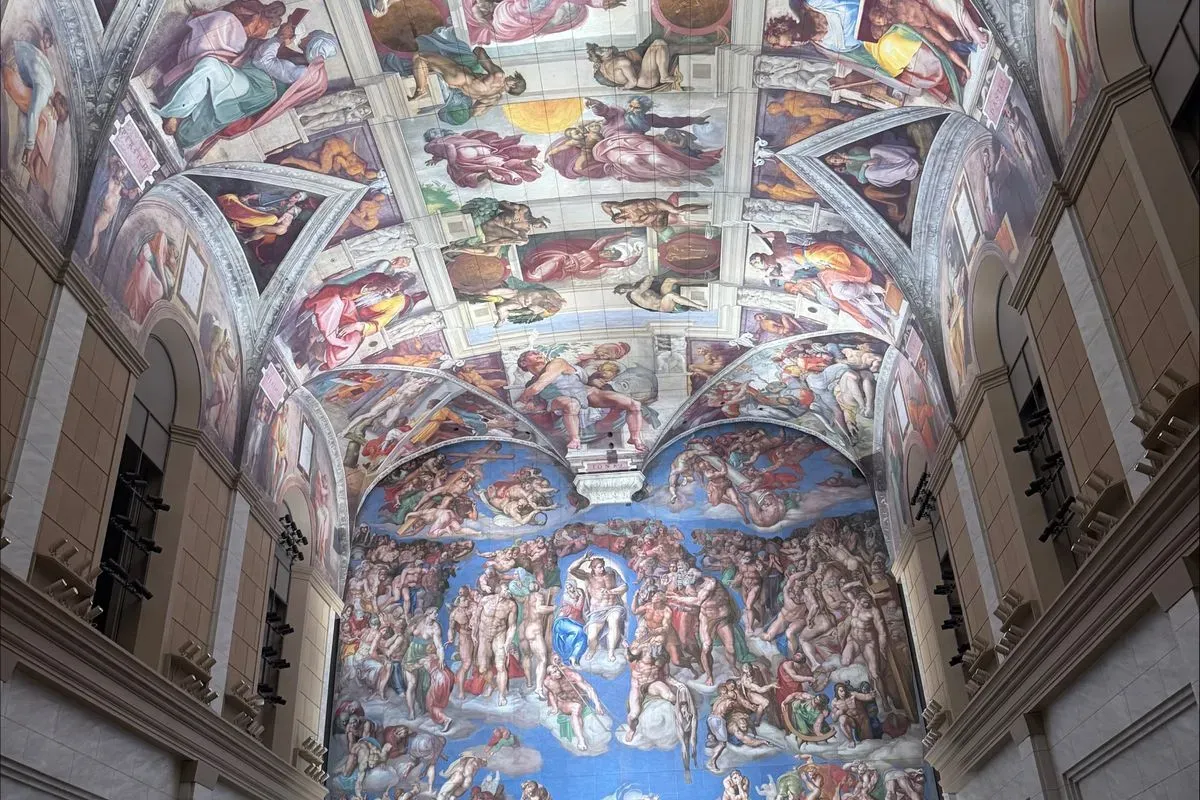
Otsuka International Art Museum@yuu Naruto City, Tokushima Prefecture, Shikoku: The Ceramic Plate Famous Painting Museum reproduces over 1,000 Western paintings from 26 countries in the world in full size using special techniques. You can enjoy art from around the world while in Japan.

Bandai Atami Station Front Foot Bath@郡山市観光協会 Located in front of the station, it is easily accessible for anyone. There are baggage storage and simple changing rooms, so you can relax during your stroll.
Eating in「Japan」

Ryotei Nicho@travelog Takamatsu faces the scenic Seto Inland Sea. It has been 70 years since Nicho was born here shortly after the war. Here in Sanuki, you can enjoy fresh seafood from the Seto Inland Sea and vegetables and fruits that are only available in this region throughout the four seasons. We are grateful for the abundance of nature's bounty and offer dishes that make the most of the ingredients.
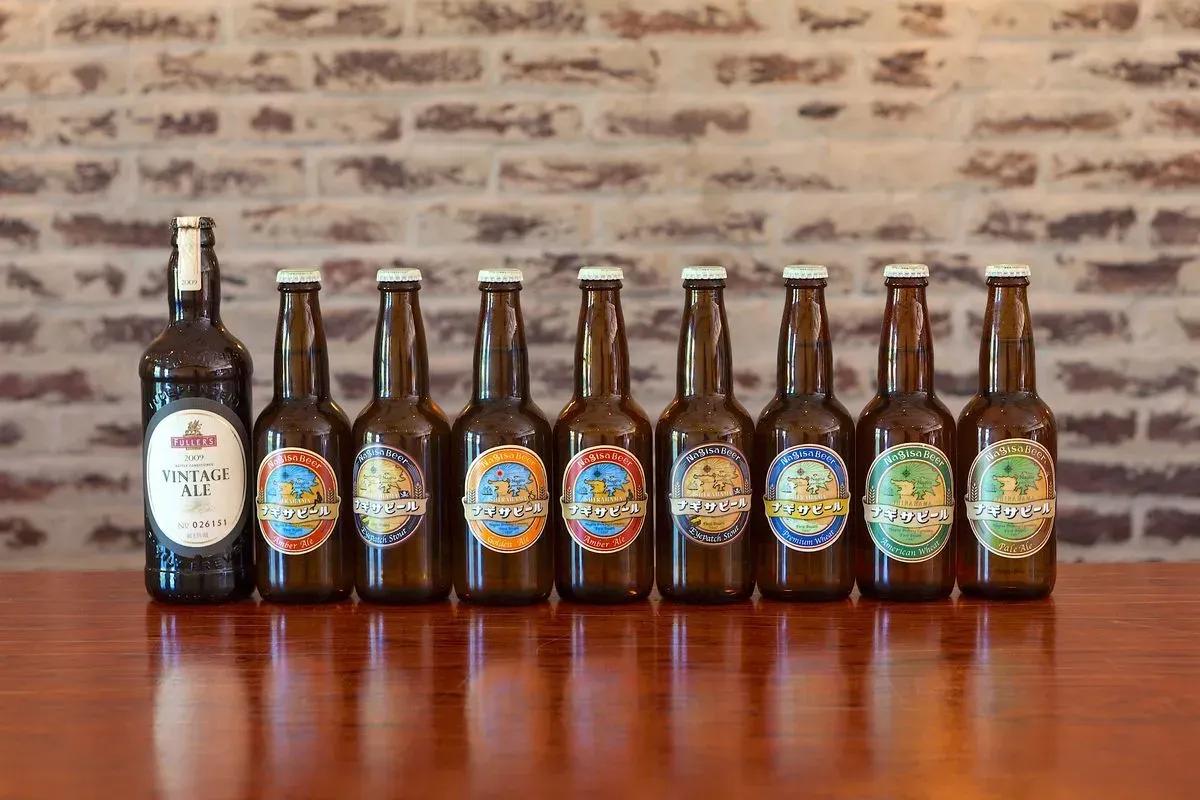
Nanki-Shirahama Nagisa Beer@和歌山県観光連盟 Nagisa Beer is a craft beer that is not heat treated or filtered. The beer is freshly brewed in tanks at the brewery and filled directly into bottles or kegs. The beer has a robust flavor and is easy to drink. You can tour the factory (free of charge) and drink from the server at the bar counter inside the factory, including the standard American Wheat and Pale Ale, India Pale Ale (400 yen each) with its rich flavor and robust bitterness, and Nagisa's first fruit beer, Mikan Ale (490 yen). In addition to a variety of beers, the popular original goods are also available. (Source: Wakayama Prefecture official tourism website)

Kobe Beef Teppanyaki Kichijoki@Lea You can enjoy Kobe beef at a reasonable price. It tastes even better as the meat is grilled right in front of you. At the end of the course, you can enjoy the original pudding from the affiliated store.

Blueberry Village Lake Kawaguchi Nature Life Center@masahiro 川口湖畔にある大石公園内の「ブルーベリーの里 河口湖自然生活館」で特産品のブルーベリーソフトクリームをいただきました。河口湖と富士山のコラボは正に絶景ですね。

Kanzaki Menkoubou Hyakunenan@佐賀県観光連盟 Kanzaki somen is said to have originated about 390 years ago, when Unsui, who had fallen ill, passed on the somen noodle-making process to the residents of Kanzaki-juku as a way of thanking them for their hospitality. Since then, Kanzaki's noodle-making industry has flourished, taking advantage of the good quality water from the Sefuri Mountains, the wheat grown in the Saga Plain, and the favorable climate. The noodles are made with a strong texture and have a smooth texture, and are known throughout the country as the Kanzaki brand. At the Hyakunen-an Restaurant, visitors can enjoy a menu featuring freshly made noodles directly from the factory. (Source: Saga Prefecture Tourism Federation)

Boulangerie Asano-ya@masahiro I visited the main store of Branger Asanoya located on the Karuizawa old road. There is a restaurant at the back of the bakery, and the lunch set comes with freshly baked bread. The beef stew was very delicious!

Niigata Local Premium Sake Brewery@新潟県観光協会 This is a specialty store where you can sample (drink standing) local sake. The Japanese-style building with a wooden fence, warm Japanese paper lanterns, and a cedar ball at the entrance. Once you pass through the noren, you will see a lineup of sake on the wall. The tasting fee is 500 yen for three cups. It is fun to have a hard time deciding which sake to try. In the back of the store, there is a sunken hearth where you can relax. In addition, one-hand menus that can be eaten and walked around will be sold. (Source: Niigata Kanko Navi)

Otaru Takino Sushi@masahiro During this short trip to Hokkaido, I really wanted to have seafood bowl at least once, and I was satisfied to be able to have it before returning. It was beautifully presented with vibrant colors. While not right near Otaru Station, I highly recommend stopping by when you visit Otaru.
Staying in「Japan」

Shirakawa Fountainhead Villa Takefue@kumamonogatari Takefue at Shirakawa Fountainhead Villa, a secluded spot in Minami-Oguni Town, Aso County, Kumamoto Prefecture. Located in a vast area surrounded by nature, it was an extraordinary and wonderful place that made me feel as if I had wandered into the world of Japanese folk tales. The Japanese landscape, which changes with the passage of time, was truly atmospheric at any time of the day, morning, noon, or night. Each of the 12 unique rooms was carefully designed with attention to detail, and each had a sense of modest luxury that seemed to be in harmony with nature.

Grand Chariot@masahiro This glamping facility is located in the midst of the great outdoors. There are also amusements such as puzzle-solving games and projection mapping that take advantage of the majestic mountains, making it fun for adults and children alike. The view from the balcony is also wonderful, and we were able to see the Akashi Kaixia Bridge.

Yunishigawa Onsen@2maigai Yunishigawa Onsen is a picturesque hidden hot spring located within day-trip distance from the Tokyo metropolitan area! Nestled along a valley that displays beautiful scenery throughout the four seasons, there are numerous hot spring inns where you can enjoy the hot springs whether staying overnight or visiting for the day. It is located in a remote mountain village where the Heike clan, defeated in the Battle of Dan-no-ura, is said to have taken refuge, making it a place where those interested in history and culture can also enjoy. Especially recommended for those who want to avoid crowded tourist destinations like Nikko and Hakone!

Hoshino Resort Aomoriya@青森県観光国際戦略局誘客交流課 A hot spring where you can experience the charm of Aomori in its entirety. The open-air bath "Ukiyu," which is free-flowing hot-spring water, extends out into the garden, creating a sense of openness as if floating on water. Since the bath is open for one-day trips, many visitors come just to enjoy the hot spring. Visitors can also enjoy Aomori culture to the fullest, including the Aomori Nebuta Festival show, a restaurant, and a horse-drawn carriage ride through the garden of the four seasons. (Source: Amazing Aomori)

Sugawa Onsen Kurikoma Sanso@一般社団法人 秋田県観光連盟 The view of the autumn leaves from the large bathhouse with a view 1,100 meters above sea level is truly spectacular. It is refreshing to soak in the milky white muddy water and feel the cool mountain breeze on your cheeks. You can also enjoy the restaurant, the open-air baths where you can stay overnight, and the large public baths. - Spring quality/Source name: Sugawa hot spring, highly acidic myoban green alumina spring (PH 2.2) - Indications: Gastrointestinal disorders, women's diseases, respiratory diseases, skin diseases (Source: Akita Prefecture's official tourism site [Akita Fun])

Sheraton Grande Ocean Resort@宮崎県観光協会 Phoenix Seagaia Resort is located on the Ittsuba coast in the northeastern part of Miyazaki City. This 154-meter-high skyscraper hotel rises almost to the center of this vast, full-scale international resort. All guest rooms offer magnificent views of the Pacific Ocean. The international restaurants and bars offer a wide variety of dishes prepared by top chefs. (Source: Miyazaki Tourist Information Season Navi)

Tamatsukuri Onsen Hotel Tamayu@しずくいし Hotel Tamasei is a hotel located in Tamatsukuri Onsen in Matsue City, Shimane Prefecture. There is a shuttle service from Tamatsukuri Onsen Station, and it takes about 5 minutes to arrive. You can also arrange for pick-up to match the train you will be taking when departing, so it's recommended to make a reservation. The interior of the hotel is elegantly designed, with a courtyard featuring a dry landscape garden and a shrine. The shrine is a place where you can pray for success, and many guests visit it. The hot spring is a sodium-calcium-sulfate-chloride spring (isotonic neutral low-temperature spring), leaving your skin smooth without feeling dry or tight after bathing. The cuisine features a course highlighting Shimane beef. The meat is delicious, and it's recommended to also enjoy an aperitif. Although it's a fruit liquor, it's refreshing and enhances the appetite. After the meal, you can also enjoy a show. You can experience generous hospitality, including catching loaches to the accompaniment of folk songs from the San'in region. There is a time limit, but the alcohol bar offers all-you-can-drink. If you don't have plans in the evening, it's recommended to arrive at the hotel early.

Resonale Kohamajima@kotoritabi A resort hotel with all-suite rooms lining the lagoon. The grounds are so vast that we used electric scooters to get to the beach and pool!
Shopping in「Japan」
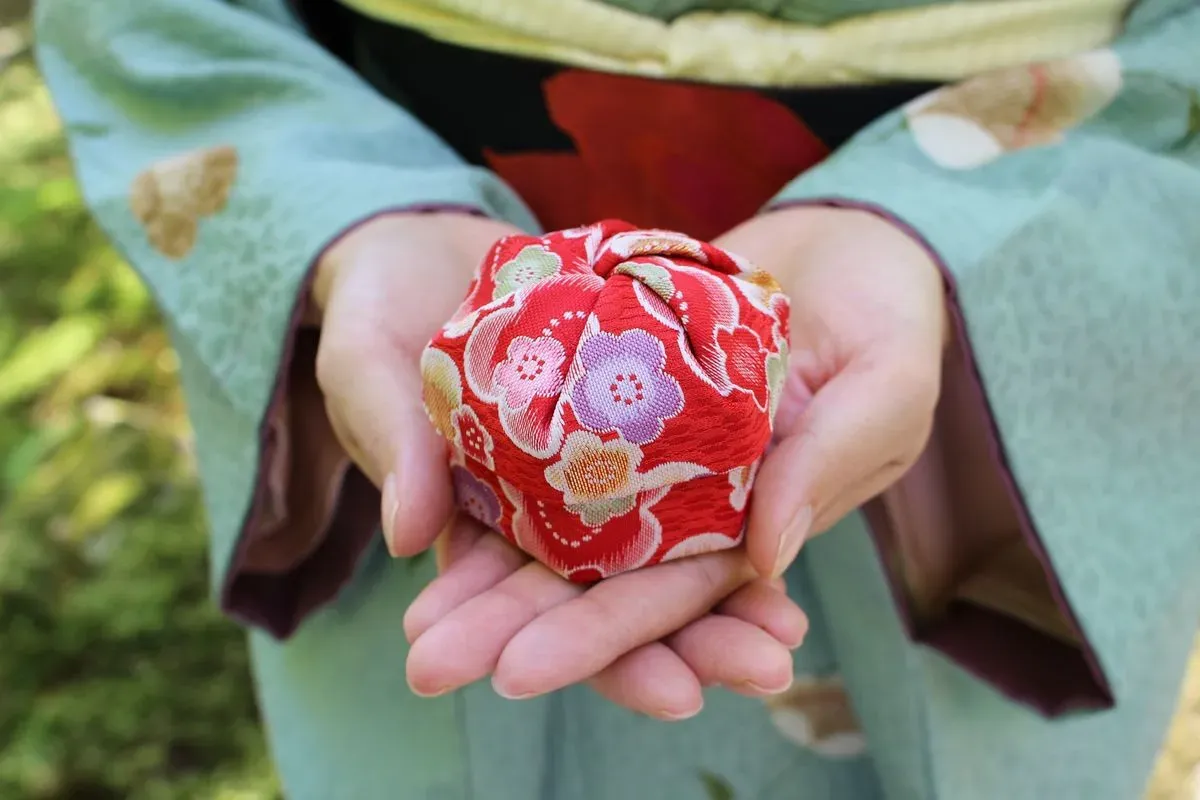
Kyo-komono Kinugasa@travelog Founded in 1968 as a kimono accessory store in front of Kyoto Monzen, a world cultural heritage site. In 2012, the store was reopened with a new concept of "Japanese design that fits in with everyday life" as a store that offers a selection of Japanese accessories with excellent design. Please try to add a little essence of Japanese style to your daily life with souvenirs for your loved ones or memories of your own travel.

Endonji Shopping Street, Shikando Area@KainMackenzie The covered shopping street "Passage des Panoramas" in Paris, France, has a sister partnership with the "Endoji Shopping Street". Under the renewed arcade, charming old shops and new ones line up, and events such as the "Endoji Tanabata Festival" and the "Endoji Autumn Paris Festival" attract many visitors. The Shikemichi area is a town of merchants that originated in the Horikawa riverside area, where Tokugawa Ieyasu moved from Kiyosu Castle to build Nagoya Castle and its surrounding town. It remains a preserved district of merchant houses and storehouses known as the "Shikemichi Townscape Preservation District". The Shikemichi area has many shops where you can buy small items, as well as restaurants and cafes, making it enjoyable for strolling around downtown. The Endoji Shopping Street and Shikemichi area are located between Nagoya Castle and Nagoya Station, and can be visited on foot or by bike sharing.

Thousand-year Salmon Kikkawa@新潟県観光協会 This company processes and sells salmon dishes in Murakami. About 1,000 salmon are hung in the town houses of Murakami. Come and see the technology that supports Murakami's traditional food culture. We will explain about the salmon and the many salmon hanging from the ceiling beams in a typical 130-year-old townhouse (registered tangible cultural property) in Murakami. Visiting points:Salmon hanging in the store and the townhouse. Experience menu:No menu Number of people accepted: Minimum 1 person to maximum 100 people (if there are many people, they will be divided into groups). Visiting days:Open all year round (closed only on New Year's Day) Visitors: No restrictions Materials for visitors: Brochures available Photographing: Possible Acceptance of educational (school) tours: Possible Reservations required (please contact us by phone, e-mail, or fax) (Source: Niigata Sightseeing Navi)

Roadside Station Abu-cho@山口県観光連盟 Roadside Station Abu-cho is said to be the "birthplace of roadside stations" (since this station was the first to be certified as a roadside station). The premises include a direct sales shop where visitors line up before the store opens to buy fresh fish and vegetables, a restaurant that serves set meals using Mukaku Wagyu beef that can only be enjoyed here, a hot spring facility where visitors can bathe while enjoying a view of the Sea of Japan, and a heated swimming pool that is heated by wood chips. In addition, the steamboat buns, which are carefully baked over a handmade charcoal fire, are very popular with adults and children alike. The Roadside Station Chibikko Hiroba has a roller slide, wooden playground equipment, and an athletic field where visitors can lie down on the grass. This pocket park is a place where parents and children can refresh themselves after a tiring drive. (Source: "Come to Yamaguchi")

FUKIYA Furusato Village@岡山県観光連盟 Nostalgic scenery unified by the color of bengara. FUKIYA, nestled in the bosom of the Chugoku Mountains, was built by wealthy merchants who amassed enormous wealth from the production of bengara and its raw material, roja. The red townscape, with its reddish-bronze Ishizhu tiles and bengara-colored exterior, is impressive. The elaborately designed mansions of these wealthy merchants are worth seeing. It is also designated as a "Furusato Village" by Okayama Prefecture. A hands-on experience plan to make handkerchiefs and bags using Bengara paints is also popular. (Source: Okayama Tourism Web)

Yodobashi Camera Multimedia Umeda@OU_odekake_club A large commercial facility located in Umeda, Kita-ku, Osaka. It is mainly composed of consumer electronics retailers, and there are various other stores such as restaurants, 100-yen shops, clothing stores, game centers, fishing tackle shops, and supermarkets. They also sell bicycles and other items. On the rooftop, there are futsal courts and barbecue areas.
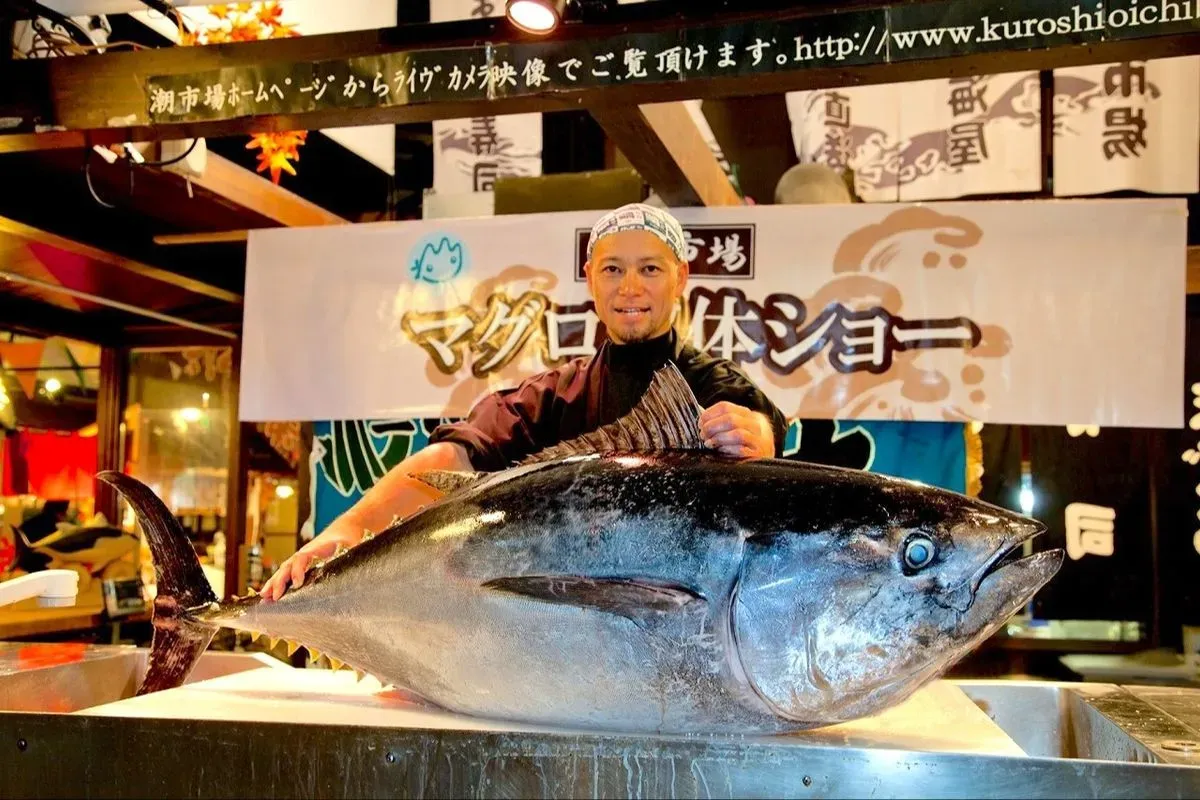
Kuroshio Market@和歌山県観光連盟 Experience the exhilaration and deliciousness of the sea at the gourmet spot 'Kuroshio Market.' A popular seafood market beloved across generations, from adults to children and the elderly.

Nihonbashi Takashimaya S.C.@madotabi The illumination was so lovely~
Transportation in「Japan」

Hakone-Yumoto Station@urina I took the Romancecar from Shinjuku to Hakone! It was very fast and convenient. The seats were very roomy and the ride was very scenic. We even saw Mt. Fuji!

Dogo Onsen Station@しずくいし Dogo Onsen Station is a stop on the Iyo Railway Jonan Line located in Dogocho, Matsuyama City, Ehime Prefecture. The station number is 24. It is the nearest station to Dogo Onsen, a representative tourist spot in Ehime Prefecture. It is the terminus for the Botchan Train, and the turning of the Botchan Train locomotive can be seen on the switchback line. I personally feel that the point of having a Starbucks attached is high. There is an entrance to a shopping street right after getting off the train. Also, within walking distance, there is the Yuzuki Castle Ruins (Dogo Park). There is also an exhibition of the Botchan Train in front of the station.

Sakaiminato@OU_odekake_club A port located in the western part of Tottori Prefecture. It is located on the border with Shimane Prefecture. In addition to ferries and high-speed boats to the Oki Islands, there are bases of the Japan Coast Guard and fishing ports. Adjacent to JR Sakaiminato Station, there are tourist spots related to Shigeru Mizuki, the author of 'GeGeGe no Kitaro', nearby.

Shiozu Station in Omi@OU_odekake_club This is a station where the JR Hokuriku Main Line and the Kosei Line diverge. It is located in Nagahama City. You can take a new rapid train from Kobe Station, Osaka Station, and Kyoto Station directly (during the day, one train per hour via the Kosei Line and one via Maibara). Limited express trains pass through without stopping. Some trains switch back at Omi-Shiotsu to connect the Maibara/Nagahama direction with the Omi-Imazu direction.
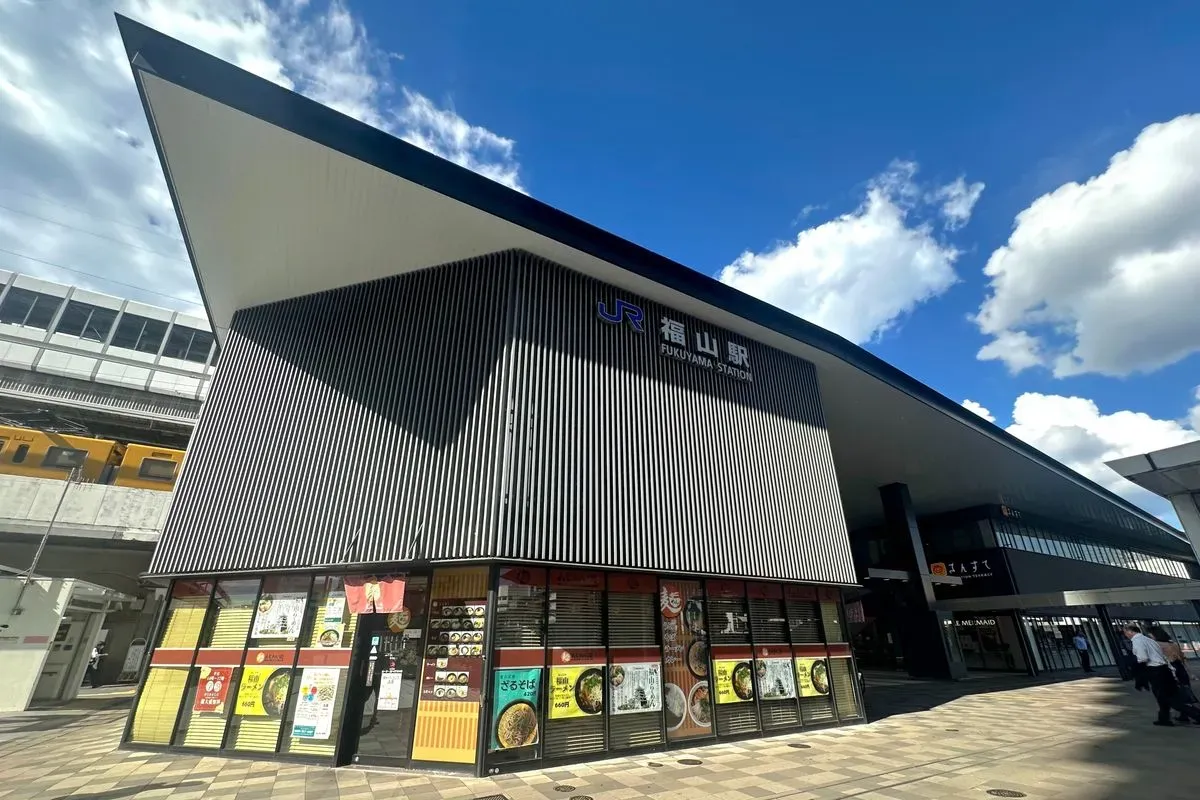
JR Fukuyama Station@masahiro It was a cool station with a modern design. The majestic Fukuyama Castle is located very close to the station. In addition to trains, it is convenient because many long-distance highway buses also stop there. This time, I only passed through, but next time, I would like to leisurely explore the charm of Fukuyama City.

Fukui Station@OU_odekake_club Fukui's gateway. In March 2024, the Hokuriku Shinkansen will be extended and open between Kanazawa and Tsuruga. The Echizen railway line connects to the Dinosaur Museum and Tojinbo, while high-speed buses operate to Eiheiji. The station building features dinosaur illustrations and Fukui's tram line also serves the station. Within walking distance of the station, there are tourist spots such as Fukui Castle Ruins, Yohokan, and the Fukui City Folk History Museum.

Kanazawa Station@Makiharu I went to see the Koto-mon gate located at the Kenrokuen Exit (East Exit) of Kanazawa Station. When I actually saw it, I realized that it is very large, impressive, and clearly a tourist attraction 🤩 Since I occasionally travel to Ishikawa Prefecture for business, I would like to see it next time in daylight 🤗

Sendai Station@masahiro Everyone was popular taking photos in front of this SENDAI monument (I finally managed to take a photo after a short wait).
